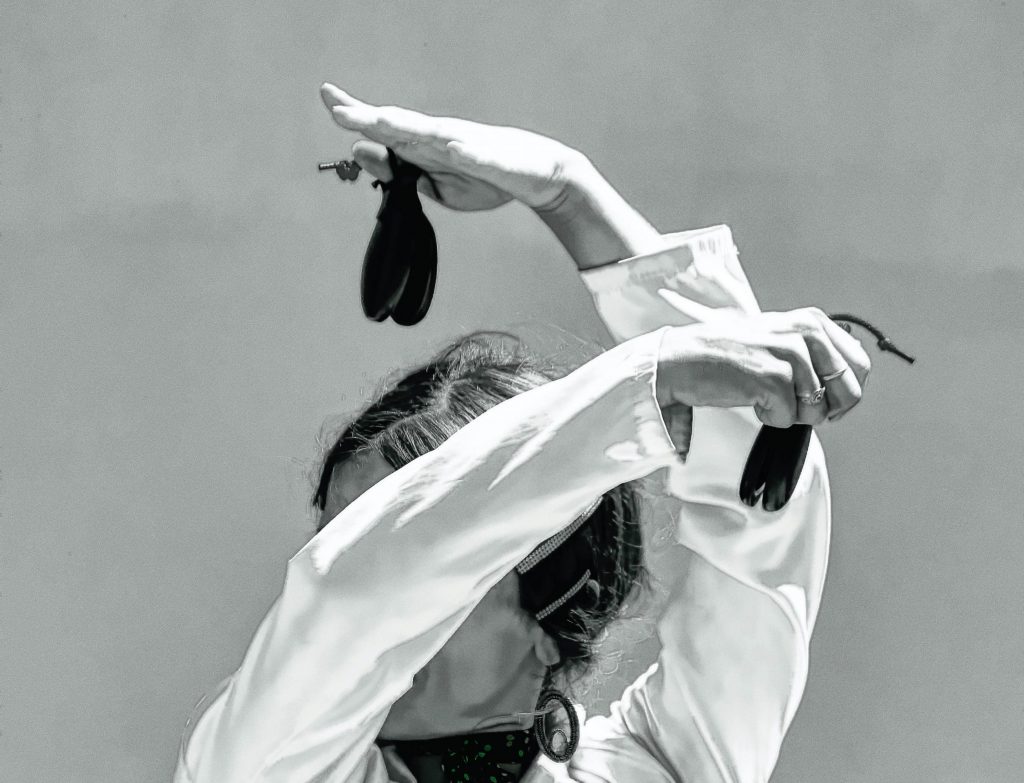The word flamenco is a concept that includes different arts, for this reason, the only way to describe it, is as a proper culture: the baile (dancing), the cante (singing) and the toque (the way of clapping hands while dancing and singing) are easily recognizable but they includes lots of different variations.
Although it passed through different stages of fame and appreciation, flamenco has ever had its own proper status within our music and it often had influence over other genres.
The origins of flamenco almost describe our history: it comes from the gypsy culture but it is also a result of Islamic and Jewish influences, together with the popular Andalusian music. Despite the different influences, we can observe a clear folkloric style typical of Andalusia, although it is well received all over Spain. The first references we have, date back to the 17th century.
Traditionally the performances were held in cafes called cafés cantantes (singing cafes), which allowed flamenco artists to convert their vocation into a proper job, around mid 1800s. These places turned later into what we now know as tablao.
As we already explained before, flamenco includes different ways of expression, depending on criteria like metrics or the topic of the songs. It’s not always possible to appreciate these differences if you are not an expert, but just to your knowledge the most representative styles are Alegrías, Bulerías, Coplas, Fandangos, Seguiriyas, Sevillanas, Soleas or Tangos; within these styles we can also find subgenres, depending on the different regions of Andalusia.
The topic of the lyrics can vary from joy to sorrow, caused by the end of a relationship or even death. They often resort to our poetry and compose their music with verses taken from the main poems (Federico García Lorca, Miguel Hernández…).
Main artists in the flamenco history
The leading figures who most stood out, belong to the 20th century, a moment when flamenco was gaining international reputation, opening to larger auditoriums and when the artists were true celebrities in Spain.
Lola Flores, also known as La Faraona, had a huge success in Spain during the whole mid 1900s. She belonged to the folkloric group: multidisciplinary artists dedicated to the copla –similar to flamenco-, who performed shows where they danced and sang. Most of them have been also working as actresses for the cinema. Among them, Lola Flores has been the most successful and her charisma left a mark on our history of popular culture.
https://www.youtube.com/watch?v=9Hn96uHkthU
Camarón de la Isla is with no doubt the most legendary idol in the whole flamenco history. This cantaor published in 1979 the album La leyenda del tiempo, revolutionary in its style for the influences from rock and jazz, being controversial for its “betrayal” to the tradition of that time but becoming later a cult album according to the experts. Ten years later he published the most sold album in flamenco history, Soy Gitano.
https://www.youtube.com/watch?v=pP6tYLmw3vQ
Paco de Lucía was a famous flamenco guitarist, author of Entre dos aguas, the most recognizable and popular melody in the history of flamenco. He had a great solo career, but he is also well know for the years he has been collaborating with the before mentioned Camarón.
https://www.youtube.com/watch?v=2oyhlad64-s
Enrique Morente, within the main flamenco artists, he stood out for escaping from the orthodoxy, working with artists who belonged to different styles: for this reason he is considered as the person who modernized flamenco. We recall the album Omega, in collaboration with the Spanish rock band Lagartija Nick, when they reinterpreted some covers of Leonard Cohen songs. From that period the cantaor and the international singer stared a friendship and a mutual artistic respect.
https://www.youtube.com/watch?v=kx_Cdv5nTmM
The great success of these flamenco artists belongs now to the past –all the mentioned artists unfortunately already died- but there are some artists of the new generation who are breaking schemes, such as the cantaoras Estrella Morente and Soleá Morente – Enrique Morente’s daughters-, Rosalía, El Niño de Elche or Rocío Márquez. On the other hand, Sara Baras is a consecrated bailaora who represents this genre of flamenco today.
If you are interested in discovering some more aspects of this culture, we recommend you to listen and read more about it. Tell us your opinion about flamenco and if you would like to know a little bit more about its history.
Spanish idioms
Hey Spaneasiers! How is your course going? We hope you are having a wonderful time learning Spanish. As we don’t want you to
